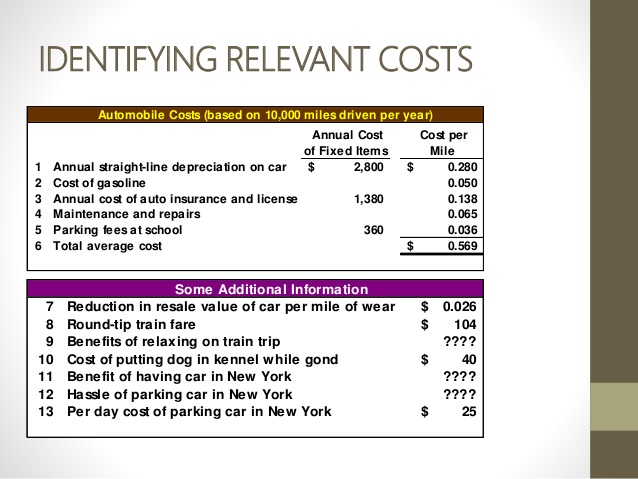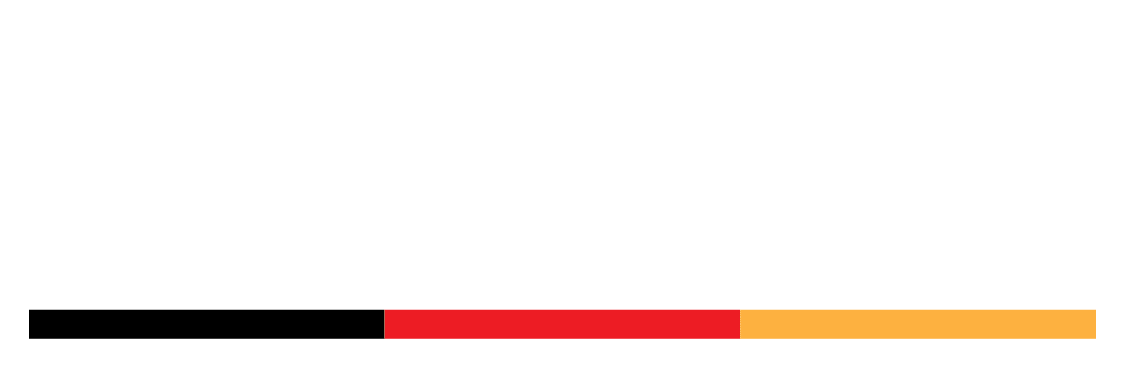Contents:


She has nearly two decades of experience in the financial industry and as a financial instructor for industry professionals and individuals. ShareholdersA shareholder is an individual or an institution that owns one or more shares of stock in a public or a private corporation and, therefore, are the legal owners of the company. The ownership percentage depends on the number of shares they hold against the company’s total shares.
UniCredit: Beat Across The Board (OTCMKTS:UNCFF) – Seeking Alpha
UniCredit: Beat Across The Board (OTCMKTS:UNCFF).
Posted: Thu, 04 May 2023 08:49:32 GMT [source]
Accrued expenses refer to the recognition of expenses that have been incurred, but not yet recorded in the company’s financial statements. For example, if a company incurs expenses in December for a service that will be received in January, the expenses would be recorded as an accrual in December, when they were incurred. The objective of accruals is to report the correct numbers of revenue and expense for that period and forecast certain receivables and payables.
Examples of Provisioning include Guarantees, Deferred tax, Restructuring liabilities, Depreciation, Sales allowances, etc. Interest PayableInterest Payable is the amount of expense that has been incurred but not yet paid. Insurance PremiumInsurance Premium is the amount paid by any individual or a corporate entity to cover themself from uncertain events resulting in heavy economic and non-economic losses.
Site and content preferences (continued)
Implicit in the first condition above is that it is probable that one or more future events will occur confirming the fact of the loss. Accounts payable, which are those liabilities derived from the purchase of goods or services, which have been received by the entity and invoiced by the supplier. In connection with these accounts, there is a transparent condition of amount and maturity. A furniture company sells 20 dining room sets for a total of $50,000 in a month. Since historical data points to an average 4% bad debt rate, the company can reasonably expect to fail to collect $2,000 of the month’s revenue, so it creates a bad debt provision for that amount.
This is inconsistent with the terminology suggested by International Accounting Standards Board. Generally Accepted Accounting Principles, “provision” refers to a debit steadiness, not a credit score balance. Provisions enable companies to gain a more accurate assessment of their financial position. This helps them shape better business decisions and provide shareholders with a clear picture of their finances.
Silvercrest Asset Management Group Inc. Reports Q1 2023 Results … – Marketscreener.com
Silvercrest Asset Management Group Inc. Reports Q1 2023 Results ….
Posted: Thu, 04 May 2023 20:02:51 GMT [source]
Therefore, an adjusting journal entry for an accrual will impact both the balance sheet and the income statement. Another example of an expense accrual involves employee bonuses that were earned in 2019, but will not be paid until 2020. The 2019 financial statements need to reflect the bonus expense earned by employees in 2019 as well as the bonus liability the company plans to pay out. Once the payment has been made in the new year, the liability account will be decreased through a debit, and the cash account will be reduced through a credit. Unfortunately, money transactions do not give information about other necessary business activities, such as revenue primarily based on credit extended to customers or an organization’s future liabilities.
Company
The Provision means to keep some money for a known liability which is probable to arise after a certain time. The Reserve is to retain some money from the profit to for any particular future use. The amount of provision cannot be used to pay off dividends, but the amount of the reserves can be used for so.
The provision increases the related liability or contra asset account on the balance sheet. Whereas a reserve is part of a business’s profit, a provision is intended to cover upcoming liabilities, set aside to improve the company’s financial position through growth or expansion. Companies may have different provisions, such as building provision for depreciation, Provision for future loss on the sale of assets, and provision for debtors, which can be expected to go bad and doubtful. While there are several points of differences between accruals and provisions, both are accounted for only in mercantile system of accounting and not in cash basis of accounting. Accruals are made almost daily to account for various expenses incurred by a business whereas provisions are only made when certain special circumstances indicate the probability of a loss occurring. The key precept established by the Standard is that a provision ought to be recognised solely when there is a legal responsibility i.e. a gift obligation ensuing from previous events.
These include white papers, government data, original reporting, and interviews with industry experts. We also reference original research from other reputable publishers where appropriate. You can learn more about the standards we follow in producing accurate, unbiased content in oureditorial policy. Whether an accrual is a debit or a credit depends on the type of accrual and the effect it has on the company’s financial statements. Accruals and deferrals are the basis of the accrual method of accounting, the preferred method by generally accepted accounting principles . Explain the difference between accrual base accounting vs cash based accounting.
- They act like a rainy-day fund, based on educated guesses about future expenses.
- By recording accruals, a company can measure what it owes in the short-term and also what cash revenue it expects to receive.
- In accounting, accrued expenses and provisions are separated by their respective degrees of certainty.
- ShareholdersA shareholder is an individual or an institution that owns one or more shares of stock in a public or a private corporation and, therefore, are the legal owners of the company.
- In this case, the utility company would make a journal entry to record the cost of the electricity as an accrued expense.
When companies buy and sell from each other, they frequently do so on credit. A credit transaction occurs when an entity purchases merchandise or services from another but does not pay immediately. The unpaid expenses incurred by a company for which no invoice has been received from its suppliers or vendors are referred to as accrued expenses. Other forms of accrued expenses include interest payments on loans, services received, wages and salaries incurred, and taxes incurred, all for which invoices have not been received and payments have not yet been made.
It holds specific meanings in accounting, where it can refer to accounts on a balance sheet that represent liabilities and non-cash-based assets used in accrual-based accounting. In accrual-based accounting, revenue is recognized when it is earned, regardless of when the payment is received. Similarly, expenses are recorded when they are incurred, regardless of when they are paid. For example, if a company incurs expenses in December for a service that will be received in January, the expenses would be recorded in December, when they were incurred. The interest expense recorded in an adjusting journal entry would be the amount that has accrued as of the monetary assertion date. A corresponding interest liability shall be recorded on the stability sheet.
The 2019 financial statements have to replicate the bonus expense earned by staff in 2019 as well as the bonus legal responsibility the company plans to pay out. Therefore, prior to issuing the 2019 financial statements, an adjusting journal entry records this accrual with a debit to an expense account and a credit to a liability account. Once the cost has been made in the new 12 months, the legal responsibility account might be decreased by way of a debit, and the money account shall be reduced via a credit score. In double-entry bookkeeping, the offset to an accrued expense is an accrued legal responsibility account, which appears on the balance sheet. By recording accruals, a company can measure what it owes in the short-term and also what cash revenue it expects to receive.
Can accrued expenses be Recognised as a provision?
An essential step in creating a provision is to estimate the amount of funds to set aside. Companies will often review their past experiences, recent financial statements or industry averages to establish the estimated size of the provision. For example, a company may estimate the amount of revenue that will be uncollectible based on historical bad debt. The provision is then recorded as a liability on contra-asset on the company’s balance sheet and as an expense on the income statement. In double-entry bookkeeping, the offset to an accrued expense is an accrued liability account, which appears on the balance sheet. The offset to accrued revenue is an accrued asset account, which also appears on the balance sheet.
New concepts like Accrual vs Provision are gaining traction to make accounting more ground connected to reality and meaningful to all the readers of financial statements. IFRS refers a provision as a reserve; generally, provisions and reserves are not the same concepts. Whereas a reserve is nothing but an organization’s profit, a provision is intended to cushion upcoming liabilities, set aside as a cushion the organization’s financial position through expansion or growth. A tax provision is the money set aside by a business to pay its income taxes for the current period. The size of the provision is based on a company’s estimate of its profit after any applicable tax deductions it claims.

Alternatively, a enterprise might pay bills early so as to recognize bills sooner, thereby reducing its quick-term income tax legal responsibility. DepreciationDepreciation is a systematic allocation method used to account for the costs of any physical or tangible asset throughout its useful life. Depreciation enables companies to generate revenue from their assets while only charging a fraction of the cost of the asset in use each year. Provision is only made for future expenses, whereas accrual is for both costs and revenue. RevenueRevenue is the amount of money that a business can earn in its normal course of business by selling its goods and services. Type liability account in the Balance Sheet to navigate against such events.
In this case, the utility company would make a journal entry to record the cost of the electricity as an accrued expense. This would involve debiting the “expense” account and crediting the “accounts payable” account. The effect of this journal entry would be to increase the utility company’s expenses on the income statement, and to increase its accounts payable on the balance sheet.
Under U.S. Generally Accepted Accounting Principles guidelines, the threshold is often closer to 75%. One example that typically meets both of these thresholds is provisions for income taxes, since it’s very likely that companies will actually have to pay income taxes on their profits. On the other hand, if the company has incurred expenses but has not yet paid them, it would make a journal entry to record the expenses as an accrual. This would involve debiting the “expenses” account on the income statement and crediting the “accounts payable” account. Every business has expenses – all types of expenses occurring for different purposes and at different stages of the business. Correct accounting for expenses is important to ensure that the financial statements reflect the true and fair position of a company’s financial position.
Most importantly, the accrual vs provision must be near-certain, or at least highly probable. Financial ReportingFinancial reporting is a systematic process of recording and representing a company’s financial data. The reports reflect a firm’s financial health and performance in a given period. Management, investors, shareholders, financiers, government, and regulatory agencies rely on financial reports for decision-making. Provisions For Bad DebtsA bad debt provision refers to the reserve made by a company to set aside an amount computed as a specific percentage of overall doubtful or bad debts that has to be written off in the next year.
In the case of the federal government, it refers to the total amount of income generated from taxes, which remains unfiltered from any deductions. Revenue is the amount of money that a business can earn in its normal course of business by selling its goods and services. Example –M/s XYZ has purchased raw material for his factory for M/s ABC on 1 January 2020. The raw materials have been received by the factory against which M/s ABC has raised a bill for USD 1,000 on M/s XYZ. M/s XYZ has a credit period of 30 days to make payment for the raw materials purchased. A typical example is a construction firm, which may win a long-term construction project without full cash payment until the completion of the project.
The onset of IFRS challenged us, as accountants, to embrace the concept of impairment as something that applies to all assets—all perhaps with the exception of cash. Impairment is now a concept intimately and definitively attached to almost every asset measured at cost or depreciated/amortized cost. Before IFRS, this concept was limited almost exclusively to trade accounts receivable and obsolete or slow-moving inventories. The terms allowance for doubtful accounts and provision for obsolete inventories have been in our vocabularies for decades—at least those of us trained in the days before IFRS was born. Provisions should be set aside when the company is aware of a probable future expense or loss. GAAP defines probable as likely to occur, an event that has 75% or greater likelihood of occurrence.
IFRSIFRS or International Financial Reporting Standards refers to a globally-accepted set of accounting and financial reporting guidelines for preparing and presenting financial statements. It ensures uniformity in accounting practice that makes financial records comparable across different reporting entities worldwide. Provisions include accounting for probable losses such as provision for doubtful debts, provision for impairment of assets etc.
- It is only that the actual settlement is pending and thus the same are accrued in the books.
- Extensive analytical tools help companies accurately estimate how much money should be set aside as provisions.
- Provisions are generally made on the basis of less substantial documentary evidence but on the basis of estimates or on the basis of information from relatively credible sources on the probable occurrence of a loss.
The warranty specifies the conditions under which the manufacturer agrees to compensate the consumer for a defective product. Based on prior experience, the company expects 6% of the televisions to be defective, with an average repair cost of $80 per unit. That adds up to 60 defective TVs and an estimated total warranty repair cost of $4,800 for the year, so the company creates a provision for that amount. Companies need to comply with regulatory requirements applicable to their region and industry, including taxation and legal requirements, as well as accounting guidelines. Amanda Bellucco-Chatham is an editor, writer, and fact-checker with years of experience researching personal finance topics.
Existence of liability in the case of provisions is not entirely certain but is probable and is depending on the occurrence or non-occurrence of certain events. Accruals involve recording of expenses that have been incurred but payment for which is yet to be made by the transacting entity. Example – M/s XYZ has a long outstanding debtor – M/s ABC that stands in the books. There is considerable speculation in the market that the business of M/s ABC has crashed and thus they may be unable to pay his dues.
Provision involves recording of expenses or losses that have not yet been incurred but they may be incurred on the occurrence or non-occurrence of certain events. M/s XYZ will make an accrual entry in his books, accounting for the purchase on 1 January 2020 itself even though he has 30 days to make payment as the liability for payment has been incurred on 1 January itself. An accrual means accounting for a liability that is certain and due but yet to be actually paid. Accrual essentially means accounting for an expense that has been incurred but has yet to be settled by a business. Receivables 220k, took full bad debts provision for 220k ,then customer agreed to pay only 100k but as final settle.
The (Not So Pretty) FERS Origins Story – FEDweek
The (Not So Pretty) FERS Origins Story.
Posted: Mon, 01 May 2023 15:07:24 GMT [source]
Financial InstitutionsFinancial institutions refer to those organizations which provide business services and products related to financial or monetary transactions to their clients. The IFRS Foundation is a not-for-profit, public interest organisation established to develop high-quality, understandable, enforceable and globally accepted accounting and sustainability disclosure standards. What are the effects of creating provision for doubtful debts on the balance s… Accrued and provision is two different things, accrued is something paid to you but you can spend it, concerning provision is not the same. Provision is making provision from the profit for a specified or known expense which is to be met in unknown future.
